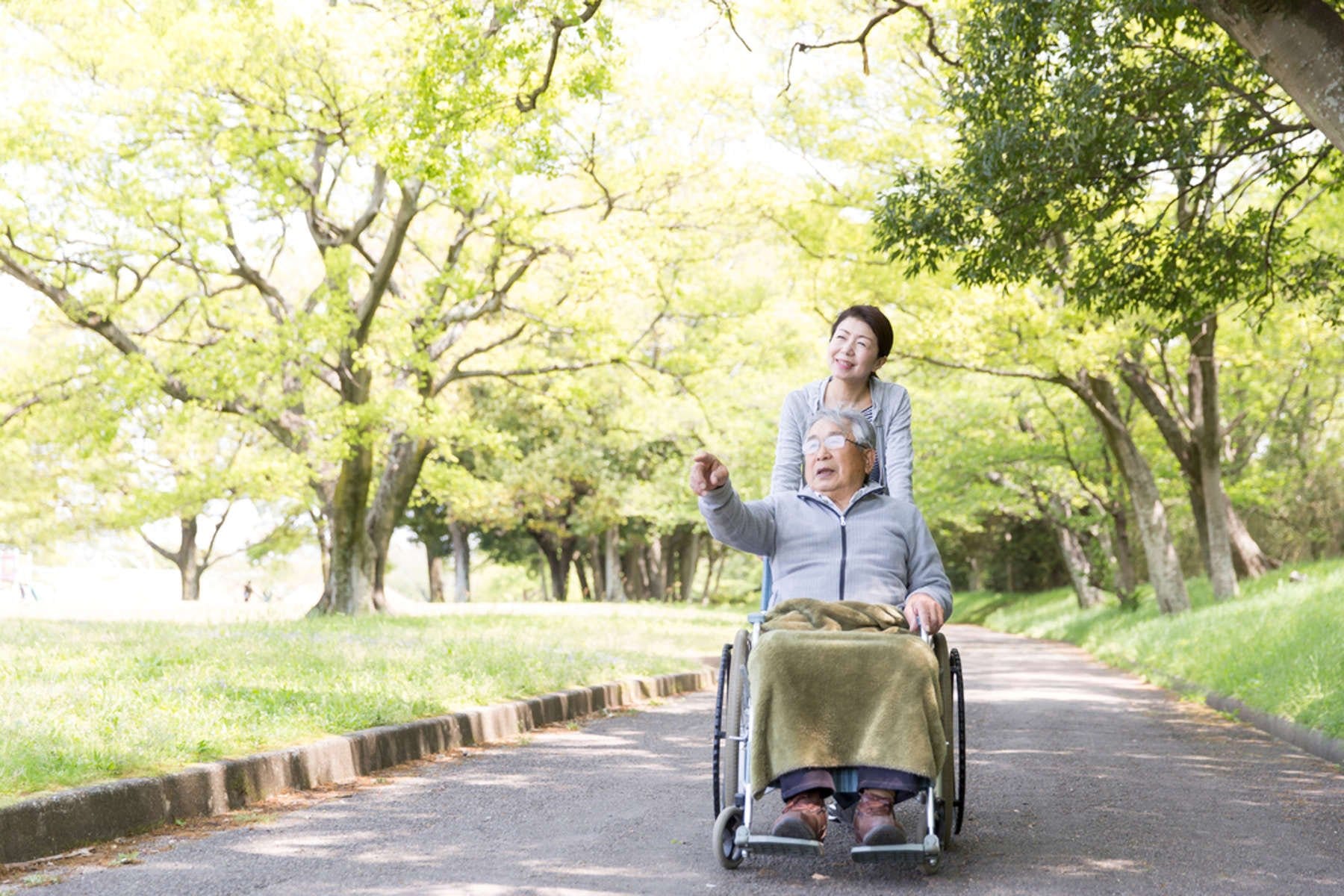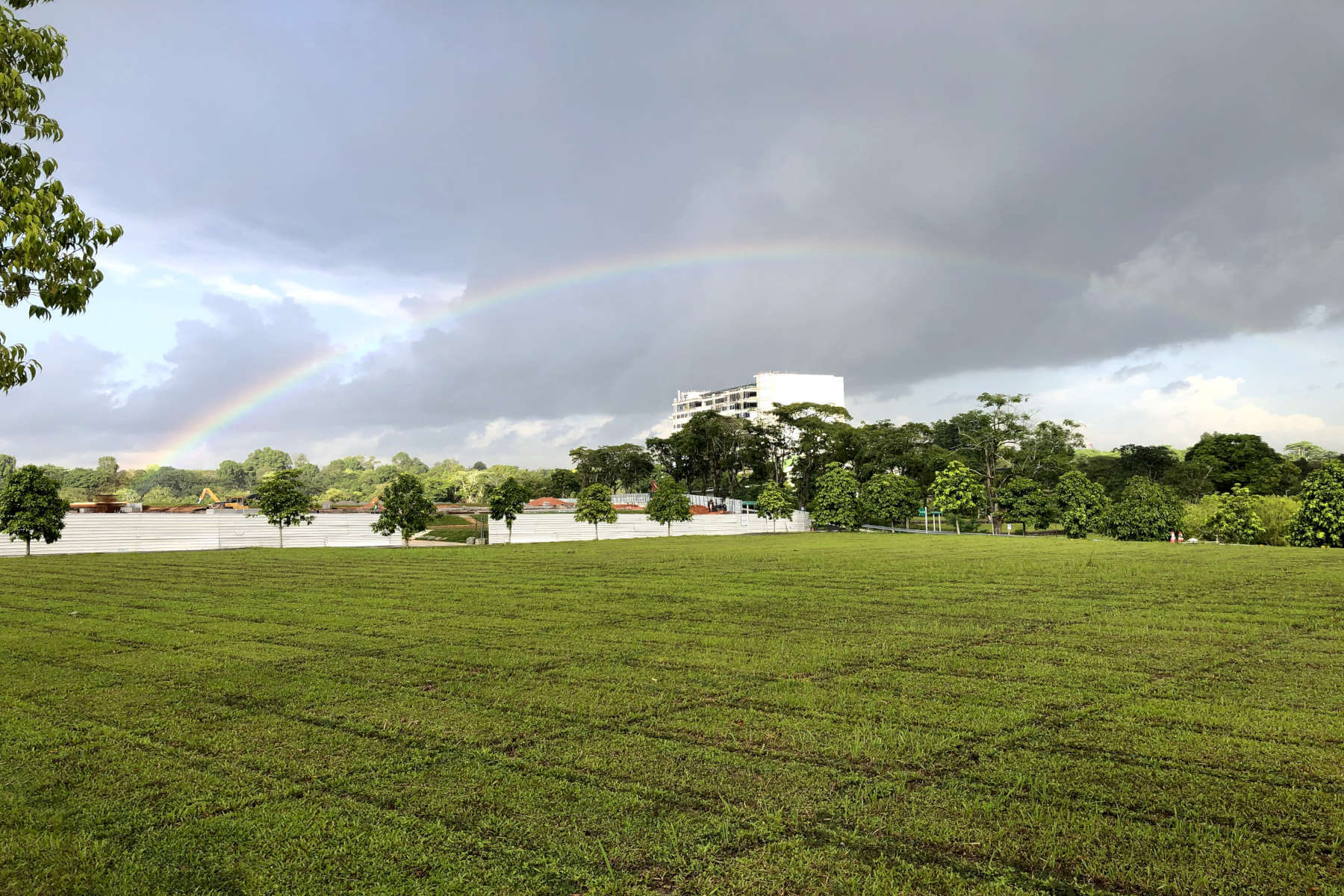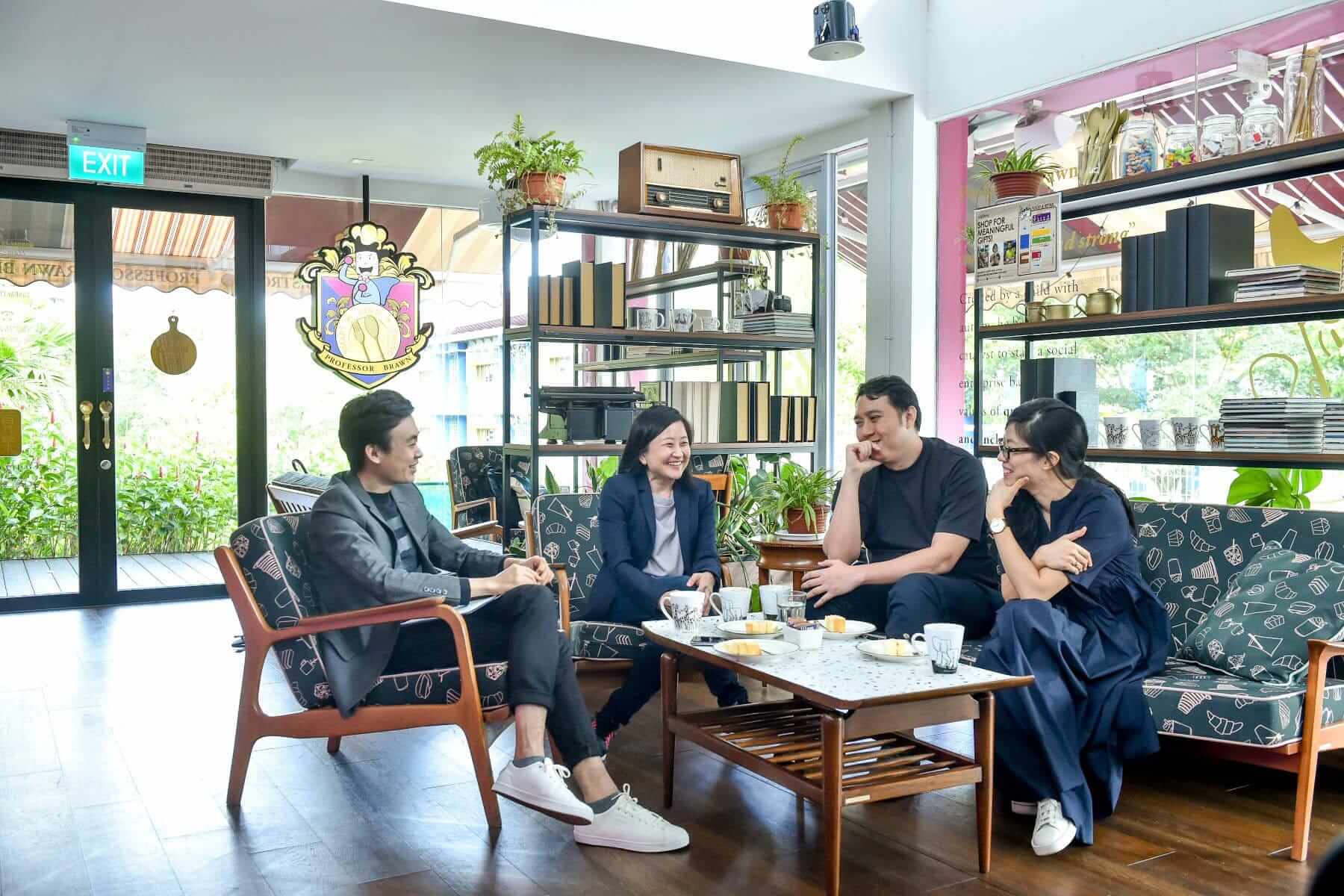The Humanistic Mission Of Architecture
Designing for dignity and comfort matters not just to the
sick and dying, but also to their caregivers
February 2023
Healthcare facilities can provide a sense of healing and dignity to the dying by acknowledging their personhood and offering them and their caregivers a place of serenity and comfort.
Abstract: The author reflects on his work as a healthcare architect while witnessing his own father’s struggle with a terminal illness. It was a tumultuous period, and he came to realise that the dignity of the dying person is very much influenced by the spaces in which death occurs, and so the design of the facility, particularly the mortuary, has an impact on the grieving process. He shares how he found the Advance Care Planning particularly instructive for its compassionate approach and how that has helped him study the use of nature, biophilia and other approaches to enhance the mission of architects to promote dignity, care and comfort in our communities.
experiencing the final moments
As a healthcare architect, I have been involved in the design of hospitals and nursing homes. The most memorable were two projects I worked on as I witnessed my father’s struggle with his own terminal illness in 2014.
Like for most families in the same boat, it was a tumultuous time for the family as we sought out second and third opinions. We brought him on multiple visits to specialist institutes, rehabilitation and therapy centres, but amidst all the myriad medical consultations and sessions, one single experience stood out – the Advance Care Planning Programme (ACP).
Based on a profound appreciation of the human condition at its lowest point, the ACP experience was probably the only one that gave my father the comfort and peace of mind he needed most. The counsellor was compassionate and understanding – offering a few rare and precious moments in my father’s final journey, in great contrast to the cold and dispassionate care environments he often had to endure.
Most immediately, in my mind’s eye, is the hospital in which he died. It could have been better designed for dying patients and their grieving families to cope with the last moments. The space for family and visitors was small and uncomfortable. Located near a loading dock, I remember how the mortuary was like a cold store-room, rendering the experience of registering the passing of a loved one perfunctory. This made me wonder if the design of the physical environment could have been as dignifying as the ACP experience.
LEARNING FROM Death TO DIGNIFY LIFE
As a healthcare architect, I had learnt that every project is Hippocratic – it must do no harm. We are charged with designing spaces to fit the purpose of healing, even unto death. The dignity of the dying person is very much influenced by the spaces in which death occurs, and so the design of a mortuary has an impact on the grieving process.
As a healthcare architect, I had learnt that every project is Hippocratic - it must do no harm. We are charged with designing spaces to fit the purpose of healing, even unto death.
As I watched my father’s life slip away, I also had to juggle two healthcare projects I was working on offering two very different attitudes towards death and dying.
One project was a hospital while the other was a nursing home. In the case of the hospital, we had to conceal the mortuary from the other patients because they had come to the hospital to be healed, and any sight of death was deemed to impede the recovery process. We needed to design screening to hide the views of hearses and caskets from the other patients and their visitors.
In contrast, the nursing home operator wanted to place the last room right at the entrance because they believe that the dead has the same dignity as the living, and so should not be hidden at the back-of-house. The operator introduced the philosophy of the ‘full-circle model of care’ to our design team, where death is embraced as part of life. This approach to healthcare boldly turns the attitude towards death inside out.
Inspired by this philosophy, we designed the last room in the hospital’s basement mortuary to provide a sense of healing and dignity to the dying and the grieving. The last room would have a sunken garden for families to spend their precious last moments with their loved one. With landscaping and indirect daylight, the atmosphere in the space would be soft, warm and restful.
The operator introduced the philosophy of the 'full-circle model of care’ to our design team, where death is embraced as part of life. This approach to healthcare boldly turns the attitude towards death inside out.
This nursing home project inspired us to think of how to bring comfort to the sick and their loved ones as we worked on the hospital project. We came to believe that the overall hospital environment must also give them a comforting experience as much as possible, transforming visits that can be both dreaded and stressful.
Seeking solace in the nature
As nature can provide positive distraction and turn silent moments with a loved one comforting, we designed the hospital grounds like a park, with no sight of rushing ambulances and no hazardous crossing of driveways. This would give patients and families the opportunity to stroll around the hospital as though they are in a large garden.
Being in nature one becomes aware of the infinite circle of life. There is evidence of decay, destruction and death; there are also examples of rejuvenation, restoration, and renewal. The never-ending cycle of birth, life, death and rebirth can put life and death into perspective and impart a sense of constancy after experiencing a life-changing loss or a death.
This is vital as access to nature also provides mental health benefits. Very insightfully, Dr Kirsti A. Dyer,
who specialises in thanatology, traumatology, wellness and bereavement in integrative therapies, made
the following connection: “Being in nature one becomes aware of the infinite circle of life. There is
evidence of decay, destruction and death; there are also examples of rejuvenation, restoration, and
renewal. The never-ending cycle of birth, life, death and rebirth can put life and death into perspective
and impart a sense of constancy after experiencing a life-changing loss or a death.”
Walking in a lush green space in a hospital can be a restorative and peaceful experience in a difficult time of sickness and recovery. An example is Yamazaki Kentaro’s design for the hospice facility at Kawamura Hospital, offering views of the lush garden in a warm setting. In the open common areas, terminally-ill cancer patients and their families can mingle with each other, fostering a sense of community and comfort.
In this issue of SEEDS Journal, we take a look at the design for dignity and comfort and its unique role in empowering communities in various projects undertaken by architectural teams in the Surbana Jurong Group.
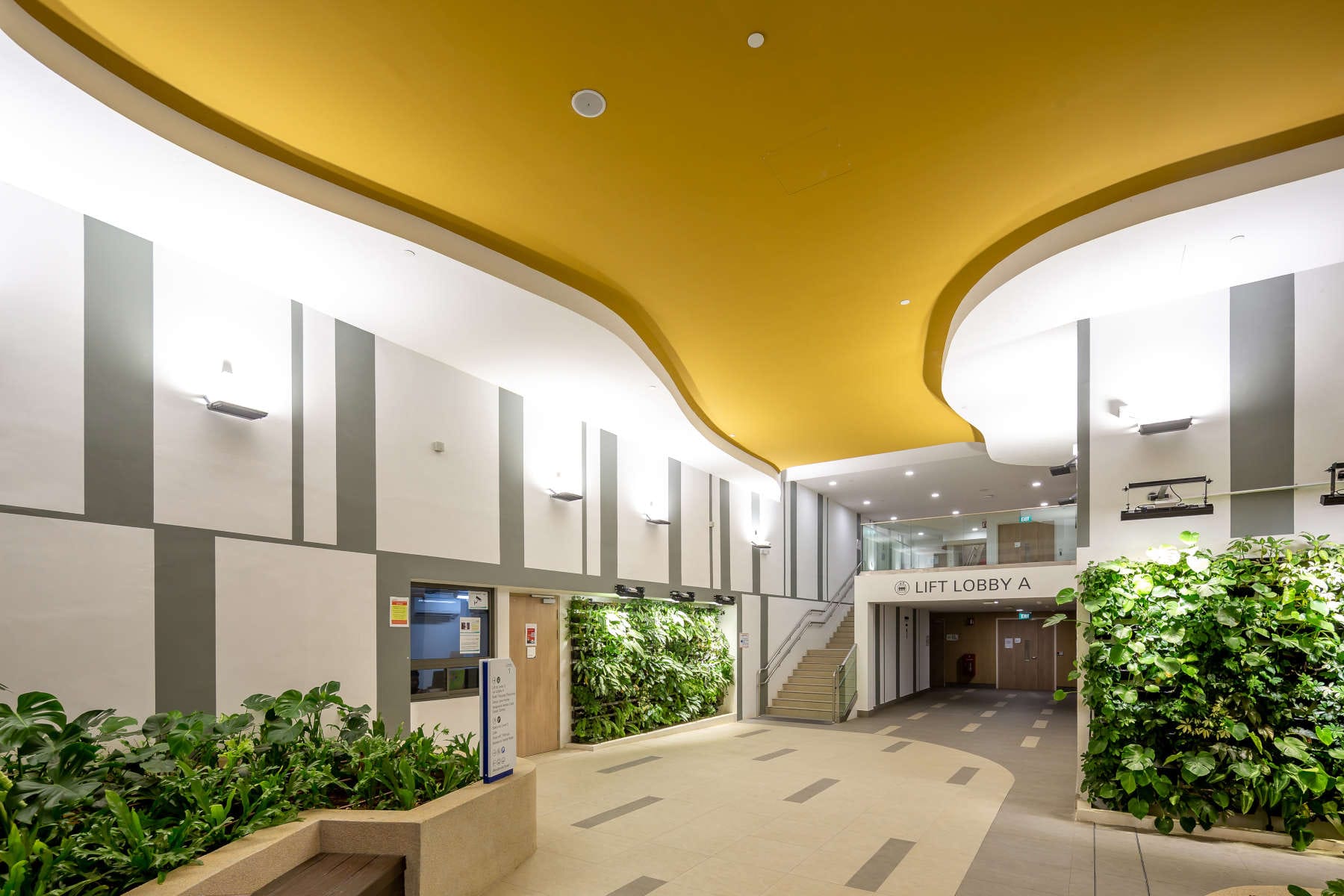
Bukit Panjang Polyclinic and Senja Care Home (Photo: SJ Architecture)
This process of holistic care is further explored in the article on ‘Invisible Design’, where we explore the impalpable benefits of biophilic design to aid in healing.

Biophilic design at the Makati Women Wellness Centre comforts and alleviates the anxiety of medical treatment. (Photo: SAA Architects)
An architect from SJ Architecture shares his thoughts on how designing a
cemetery park project at Choa Chu Kang helped him to have a more accepting attitude towards death
as he gained confidence in his architectural projects.
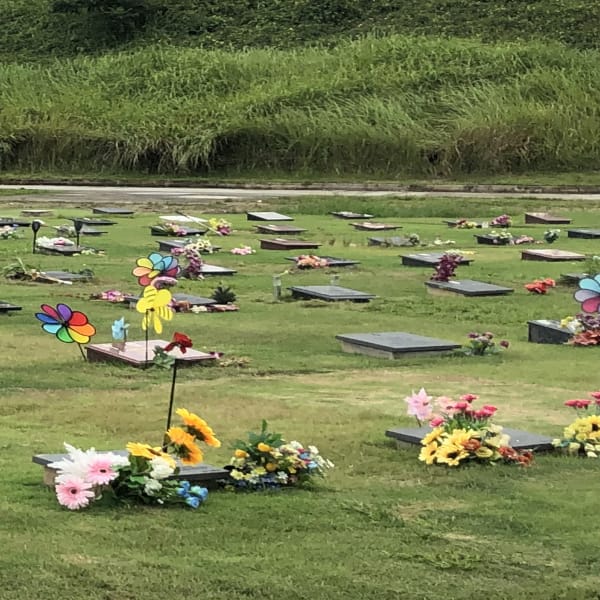
Lawn at Choa Chu Kang Cemetery
Finally, in a special Dialogue, we talk to users of care facilities to better understand how we can design better for rehabilitation, for restoration and for dignity.
The projects featured in this issue are challenging to share because of their sensitive nature. Yet they all carry a common and important message – that if we design with the intention to promote dignity, care and comfort in our communities, we will come one step closer to the humanistic mission of our work as healthcare architects.
If we design with the intention to promote dignity, care and comfort in our communities, we will come one step closer to the humanistic mission of our work as healthcare architects.

Lawn at Choa Chu Kang Cemetery
Finally, in a special Dialogue, we talk to users of care facilities to better understand how we can design better for rehabilitation, for restoration and for dignity.
The projects featured in this issue are challenging to share because of their sensitive nature. Yet they all carry a common and important message
if we design with the intention to promote dignity, care and comfort in our communities, we will come one step closer to the humanistic mission of our work as healthcare architects.
The SEEDS Journal, started by the architectural teams across the Surbana Jurong Group in Feb 2021, is a platform for sharing their perspectives on all things architectural. SEEDS epitomises the desire of the Surbana Jurong Group to Enrich, Engage, Discover and Share ideas among the Group’s architects in 40 countries, covering North Asia, ASEAN, Middle East, Australia and New Zealand, the Pacific region, the United States and Canada.
Articles at a glance




